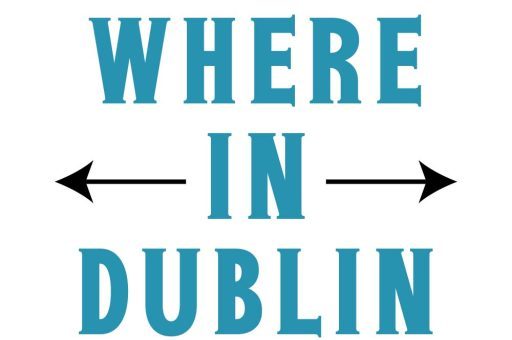If you’re heading to Dublin or already living there, one of the first questions that comes up is, can you safely drink tap water in Dublin? It’s a valid question, especially for travelers or new residents who might be cautious about local water quality. The short answer is yes, you can drink tap water in Dublin, but there’s more to the story than just a yes or no.
In this detailed guide, we’ll walk through everything you need to know about Dublin’s tap water, from its safety and treatment process to its taste, regulations, and even tips for those who prefer bottled or filtered water. Based on my overall experience, the truth is simple: Dublin’s water is safe, but understanding why helps you feel more confident filling your glass straight from the tap.
The Source of Dublin’s Tap Water
Before anything else, let’s start with where Dublin’s tap water actually comes from.
1. Dublin’s Water Supply Network
Dublin’s water comes mainly from rivers and lakes, especially the River Liffey and its tributaries, as well as nearby reservoirs like Poulaphouca (Blessington Lake) and Roundwood Reservoir in County Wicklow.
These sources are fresh surface waters that go through several levels of treatment before they ever reach your tap. The treatment process ensures that the water meets both Irish and EU drinking water standards.
2. The Role of Irish Water
Uisce Éireann (Irish Water) is the public utility responsible for managing and treating water across Ireland, including Dublin. They continuously test and monitor water quality to ensure it’s safe to drink.
Their quality checks include testing for bacteria, nitrates, chlorine levels, and trace metals. If a problem ever arises—like contamination or pressure issues, they’re required to inform the public quickly.
Water Treatment Process in Dublin
Now, how exactly does Dublin make sure its water is clean and safe to drink? The process involves a few key stages that guarantee quality control.
1. Coagulation and Filtration
The first step removes large particles, sediments, and impurities. Coagulants are added to make small particles stick together, making it easier to filter them out.
2. Disinfection
After filtration, the water goes through chlorination, which kills harmful microorganisms and bacteria. Dublin uses controlled amounts of chlorine to ensure safety without making the taste too strong.
3. Monitoring and Sampling
Samples are taken daily across various points in the water network. These samples are tested for microbiological, chemical, and physical properties to ensure consistent quality.
This continuous process ensures that every drop you drink is within EU safety limits.
Is Tap Water Safe to Drink in Dublin?
Yes, tap water in Dublin is safe to drink. It meets all the standards set by the European Union Drinking Water Directive.
However, safety can sometimes vary slightly depending on your location, especially if you’re in rural or older residential areas. Let’s break that down.
1. City Areas
In central Dublin and most suburbs, the tap water is perfectly safe. The pipes are regularly maintained, and water quality reports are public.
2. Older Properties
If you live in an older house or apartment, especially those built before the 1980s, there’s a small chance that old lead pipes could still be part of your plumbing. While the water leaving treatment plants is lead-free, it can absorb traces of lead from these old pipes.
If you’re unsure, you can ask your landlord or local council for information. There are also free testing kits available to check lead levels.
3. Boil Notices
Occasionally, Irish Water may issue a boil water notice in certain areas if there’s been contamination or technical issues during treatment. These are usually short-term and well-publicized. You’ll see updates on local news or Irish Water’s official website.
How Does It Taste?
Dublin’s tap water has a distinct taste that some people love and others don’t. That’s due to a mix of chlorine, mineral content, and softness level.
1. Chlorine
You might notice a mild chlorine smell or taste, especially when the water first comes out of the tap. This is normal—it’s there to keep the water free of bacteria.
To reduce the taste, just let the water sit for a few minutes in an open container. The chlorine will naturally evaporate.
2. Water Hardness
Dublin’s water is considered moderately hard because of the minerals it collects from rivers and limestone areas. Hard water can leave marks on kettles and faucets, but it’s completely safe to drink and even adds a small amount of calcium and magnesium to your diet.
Tap Water vs. Bottled Water
Some people still prefer bottled water, especially if they find the tap water taste different from what they’re used to. But how does bottled water really compare to Dublin’s tap water?
1. Quality
Tap water is tested more frequently than bottled water. Irish Water runs thousands of tests each year, while bottled water companies test only by batch.
2. Cost
Tap water is practically free compared to bottled water. A liter from the tap costs a fraction of a cent, while bottled water costs hundreds of times more.
3. Environmental Impact
Using tap water instead of bottled water dramatically reduces plastic waste. Dublin already has many refill stations and public fountains, making it easier to stay hydrated sustainably.
Tips for Enjoying Tap Water in Dublin
If you’re new to Dublin or visiting, these tips can help you make the most of your tap water safely and comfortably.
1. Use a Filter Jug
If you’re sensitive to taste, a simple carbon filter jug can remove chlorine and improve flavor. It’s a good middle ground between bottled and tap water.
2. Run the Tap for a Few Seconds
If water has been sitting in the pipes overnight, run it for 10–20 seconds before drinking. This clears out any stale water.
3. Keep Your Tap Clean
Wipe your tap regularly and clean aerators (the small mesh at the end) to avoid mineral buildup.
4. Use Cold Water for Drinking and Cooking
Cold tap water is fresher. Hot water can dissolve metals from pipes more easily, so always use cold for cooking or drinking.
Water Safety for Tourists
If you’re visiting Dublin for a short trip, you can drink the tap water without any issues. Hotels, restaurants, and cafes all use tap water for cooking, ice, and drinks.
If you have a sensitive stomach or are traveling from a region with very different water, you might feel slight digestion changes—not because of contamination, but simply because your body is adjusting to the new mineral balance.
That’s normal and harmless, but if you prefer to ease into it, try drinking filtered tap water for the first few days.
What Locals Say About Dublin Tap Water
Ask locals, and most will say they drink tap water every day. While a few might prefer bottled water for taste, the general opinion is that Dublin’s tap water is perfectly fine.
From my own personal experience, I’ve found that the water quality is reliable, consistent, and safe year-round. Occasionally, during maintenance or heavy rain periods, the taste may slightly change, but it’s nothing concerning.
The peace of mind of knowing your water is monitored and tested so often is reassuring. Once you get used to the taste, you’ll probably stop noticing any difference at all.
Government and EU Oversight
Dublin’s tap water isn’t just tested locally, it’s also regulated under strict EU standards.
1. EU Drinking Water Directive
This directive sets legal limits for over 50 parameters, including bacteria, nitrates, metals, and pesticides. Irish Water must report their findings to the Environmental Protection Agency (EPA), which makes the results public.
2. Environmental Protection Agency Reports
The EPA publishes annual water quality reports, ranking areas by safety and identifying any places needing improvement. Dublin consistently ranks among the best-performing regions.
3. Transparency
Anyone can access local water quality data. Irish Water provides detailed reports online showing chlorine levels, pH balance, and mineral composition for every major water supply zone.
Common Myths About Dublin Tap Water
Let’s clear up a few popular myths people often hear:
Myth 1: Tap Water Isn’t Safe for Tourists
False. Dublin’s water is safe for everyone, including tourists. It’s treated and tested to the same standards as other major European cities.
Myth 2: Bottled Water Is Cleaner
Not necessarily. Bottled water can sometimes contain more bacteria if stored improperly or left in warm conditions. Tap water is continuously refreshed and monitored.
Myth 3: Chlorine Means It’s Contaminated
Chlorine is a disinfectant, not a sign of contamination. The amount used is minimal and ensures safety without affecting health.
How Dublin Compares to Other Cities
Dublin’s tap water quality holds up well compared to other European capitals.
London: Similar mineral content and treatment system, though often higher in chlorine.
Paris: Slightly softer water due to underground sources.
Berlin: Comparable quality and strict EU regulation.
So, if you’ve been drinking tap water safely in any major European city, Dublin’s water will feel just as safe and familiar.
What to Do If You Notice a Problem
Though rare, if your tap water suddenly looks cloudy, smells odd, or tastes metallic, here’s what you can do:
Run the tap for a few minutes to see if it clears up.
Check Irish Water’s website for updates or maintenance work in your area.
Contact your local council or Irish Water if the issue persists. They’ll often send out a technician or testing kit.
These occasional issues are usually caused by pipe maintenance or harmless air bubbles.
Final Thoughts
So, is it OK to drink tap water in Dublin? Absolutely, yes. It’s safe, reliable, and held to high European standards. While some might prefer bottled or filtered options for taste, the water from your tap is clean and monitored closely.
From my overall experience, once you get comfortable with the slight chlorine taste, you’ll realize that Dublin’s tap water is not only safe but convenient and eco-friendly too.
Choosing tap water saves money, reduces waste, and helps support sustainable practices across the city. So, go ahead—fill your glass, make your tea, or cook your meal straight from the tap. Dublin’s water’s got you covered.



